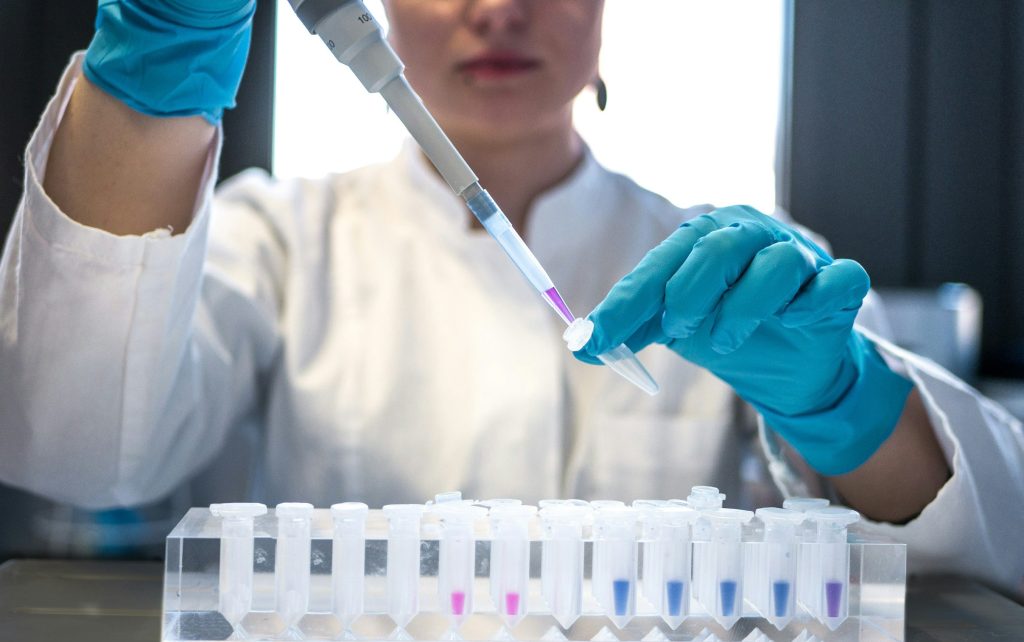
Preface
Executive Summary
Preface
Executive Summary
Americans are already familiar with how the Chinese government conducts economic warfare with crucial technologies such as semiconductors: corner the supply chain, then choke it to weaken the United States. But this is not the last time Beijing will run this play, and it is not even the most dangerous version of it.
Imagine a not-so-distant future where researchers in Shanghai develop a breakthrough drug that can eliminate malignant cells, effectively ending cancer as we know it. But when tensions over Taiwan reach a breaking point, the Chinese Communist Party (CCP), the strategic apparatus of the Chinese government, hoards the treatment under the guise of national security, cutting off supply to the United States. After years of access, this lifesaving drug is immediately in shortage, requiring doctors to ration it while American biotechnology companies scramble to reconstitute production in the United States. The streets and social media overflow with people demanding that the United States abandon Taiwan. The Administration faces an agonizing choice between geopolitical priorities and public health.
This scenario is fiction. But something like it could soon become reality as biotechnology takes center stage in the unfolding strategic competition between the United States and People’s Republic of China (China).
Based on two years of research and consultation with private and public experts, this report comes to a sobering, even frightening, conclusion: China is quickly ascending to biotechnology dominance, having made biotechnology a strategic priority for 20 years.1 To remain competitive, the United States must take swift action in the next three years. Otherwise, we risk falling behind, a setback from which we may never recover.
Biology has been a well-defined scientific discipline for more than 200 years. But thanks to breakthroughs in artificial intelligence (AI), engineering, and automation, biology is becoming more than just a field of discovery; it is becoming a field of design. Chemistry made this leap in the 1880s when chemical engineering unlocked rubber, plastic, and synthetic fibers, materials that transformed society.2 Physics followed in the 1940s, when academic theory led to the atomic bomb, semiconductors, and computers. Now for the first time in recent history, the United States finds itself competing with a rival over a new form of engineering that will create tremendous wealth, but, in the wrong hands, could be used to develop powerful weapons. Countries that win the innovation race tend to win actual wars, too.
We are entering the age of biotechnology, a time when biology is the basis of innovation. From more productive seeds and targeted cancer therapies to the possibility of genetically enhanced soldiers, biotechnology’s reach extends far beyond the laboratory. Every strategic sector—including defense, healthcare, agriculture, energy, and manufacturing—can be advanced by biotechnology, but also breached by it, too. These are not just matters of scientific achievement; they are questions of national security, economic power, and global influence.
Falling further behind would signal a global power shift toward China and create an array of new strategic challenges for the U.S. government:
- What would it mean for world order if China developed biological means for dramatically extending human life or enhancing cognitive capabilities?
- Who will control the biological intellectual property (IP), from sustainable energy to advanced agriculture, that may prove as vital in the 21st century as fossil fuels were in the 20th?
- What would the implications be for global security if an adversary engineered pathogens and used them against us?
China’s recent success across core biotechnology capabilities, including AI-driven drug discovery platforms and biomanufacturing, signals that they may soon eclipse us. And if that happens, the United States may never be able to catch up. In previous generations, we might have had decades to maintain our lead, but now, the window to act is just years.
AI is accelerating us toward this inflection point. Using tools such as AlphaFold from Google’s DeepMind, scientists have predicted hundreds of millions of intricate 3D protein structures, providing a deeper understanding of biology.3 What once took months or even years can now be done in a weekend. With AI, along with gene editing tools like CRISPR, scientists will soon be able to create materials from scratch, prevent illnesses at the level of genetic code, and develop more resilient crops and livestock.
Though the United States’ advantage was once thought unassailable, China has emerged as a powerhouse in AI-enabled biotechnology. For example, the CEO of Chinese technology giant Baidu also established BioMap, a life sciences and AI firm with offices in Beijing, Suzhou, Hong Kong, and Palo Alto.4 BioMap announced the first life science AI foundation model to hit 100+ billion parameters, which it calls the largest of its kind.5 In 2024, BioMap signed an agreement with the Hong Kong Investment Corporation, a government-owned fund, to launch a bio-computing innovation accelerator program in Hong Kong to develop the biotechnology ecosystem there.6 It and other biotechnology companies use AI to design biological products. Companies like these then work with China’s leading biomanufacturer, WuXi AppTec, to produce them at scale in its global network of facilities. WuXi AppTec, which has transferred American IP to the Chinese government, manufactures essential ingredients for widely used medications that treat leukemia, lymphoma, obesity, and Human Immunodeficiency Virus (HIV).7
China has long been proficient at acquiring IP from abroad—through both legal channels (such as mergers and acquisitions) and illegal channels (such as theft). Now it knows how to put that IP to work through state-backed entities. A multinational company invents a key drug, a national champion like WuXi AppTec scales it up, and then the CCP can control a global supply chain. China has accomplished this feat through massive investments in its domestic biotechnology sector, including a 400-fold increase in biopharma R&D spending, over the past decade.8 National champions like WuXi AppTec have benefited greatly from such government support.410 Now with 38,000 employees and almost $6 billion in revenue in 2023, WuXi AppTec has become the Huawei equivalent for biotechnology.9 In 2024, an industry trade group surveyed U.S. biopharmaceutical companies and found that 79 percent of those companies depend on WuXi AppTec and other China-based companies for at least some component of their manufacturing.10 As precision medicine advances, it is likely that such dependence will only grow.
This situation is exactly what the CCP wants. The Commission’s research indicates that China is likely to follow the same playbook with biotechnology as it has with other strategic technologies. First, they steal. Then, they scale. Once they have cornered the market, they strangle.
In late 2024, China cut off U.S. access to gallium and germanium, jeopardizing U.S. semiconductor production.11 According to the U.S. Geological Survey (USGS), a complete restriction of these minerals by China could slash U.S. GDP by $3.4 billion.12 But the economic danger of losing the biotechnology competition is much greater.
What would it mean for the United States and the world if the CCP gained control of foundational technologies in key sectors, from agriculture to medicine to energy and defense?
The Commission has every reason to believe that the CCP will weaponize biotechnology. China already deploys genomic surveillance to identify, track, and control Uyghur Muslims, part of an extensive system of technology enabled genocide.13 In 2018, an ostensibly rogue Chinese scientist produced genetically modified babies and though briefly imprisoned, is already back in the lab.14 Now, with its Military-Civil Fusion (MCF) strategy, the CCP aims to use biotechnology-powered troops (it calls this human-machine teaming “intelligent warfare”) to make the People’s Liberation Army (PLA) a “world-class military” by 2049.15 Drone warfare will seem quaint if we are faced with genetically enhanced PLA super-soldiers with fused human and artificial intelligence.
At the outset of World War I, the United States did not yet fully appreciate how airplanes would rapidly change the nature of war. But once we understood the significance of aviation for force projection, reconnaissance, logistical support, and beyond, we dominated the skies. Similarly, the full impact of the biotechnology revolution will not be clear until it arrives. But one thing is certain: it is coming. There will be a ChatGPT moment for biotechnology, and if China gets there first, no matter how fast we run, we will never catch up.
Our window to act is closing. We need a two-track strategy: make America innovate faster, and slow China down.
On the home front, biotechnology holds immense potential for improving the lives of everyday Americans. After two years of assessing the landscape, we estimate that by 2030, most people on the planet will have consumed, used, worn, or been treated by a product of emerging biotechnology. By 2035, biomanufacturing will be used to onshore the production of critical chemicals, securing supply chains and supporting new jobs. By the 2040s, we will have highly accurate biosensors that can monitor personal health, fitness, and nutrition, and enable personalized treatment plans to dramatically improve health. By 2045, fewer people will die from heart disease, thanks to cell therapy and the 3D printing of organs for transplant. By the 2050s, we will be able to collect rare minerals from the moon and Mars, using robotic missions to biomine in space.
An American-led future of biotechnology can bring all of this home. So how do we realize this future?
The United States should not try to out-China China; that is a losing strategy. Instead, we must lean into our inherent strengths. Our open innovation ecosystem attracts top talent from across the globe, and America’s capital markets remain four times larger than China’s. We understand that innovation need not come at the cost of safety, security, and responsibility. We are home to many of the world’s leading public and private research institutions, with more biotechnology patents, companies, and Nobel Prize winners than any other country.16 Modern biotechnology is an American innovation.
This is not about our ability to run fast; it is about us tripping over our own shoelaces. While the United States innovates better than any other country in the world, we also make it unnecessarily difficult to commercialize and scale our best ideas. We need a “private-public” partnership for biotechnology, driven by industry in collaboration with government. By coupling supply-side incentives to drive R&D and initial growth with targeted demand-side signals to reduce investment risks, the federal government can unleash private sector capital to drive a world-class biotechnology industry.
Slowing China’s progress requires ending our own willful blindness to its biotechnology ambitions. We must defend our biotechnology IP and data against Chinese state-sponsored corporate espionage, even if it means rejecting an attractive investment. We must not treat Chinese state-run companies as ordinary competitors in our market, even if it means using more expensive alternatives. China does not have a right to American research—period.
The choice is stark: do nothing and accept defeat, or act swiftly and give America a fighting chance.
The Commission’s main recommendation is this: the U.S. government should dedicate a minimum of $15 billion over the next five years to unleash more private capital into our national biotechnology sector. Any smaller amount risks hamstringing U.S. innovation and product development. The advancement of U.S. biotechnology requires a balanced approach, fostering competition without picking winners, while also leveling the playing field by blunting China’s non-market actions. While ingenuity thrives on free enterprise, the pressures of quarterly earnings can discourage companies from making bold technological leaps. The government’s role is not to create a sluggish bureaucracy, but rather to unlock private capital and streamline regulation, empowering American engineers and entrepreneurs to do what they do best: win.
Principles for Action
- Promote U.S. biotechnology innovation. Throughout our history, the United States has had an outsized impact on the world because of our innovation ecosystem, from medicines to the internal combustion engine to space. If we want humanity to benefit from progress in biotechnology, we want our democratic values to lead the way.
- Be the biotechnology partner of choice for the world. While we have led in the past, we have not done so alone. We need to work together with our partners and allies to deliver on the benefits of biotechnology while also preventing misuse.
- Use national security tools to protect our innovation and industrial base in biotechnology. This means preventing the loss of our technological leadership while also preventing risky supply chain dependencies.
- Work with the international community, including China where prudent, to develop best practices and standards for biosafety and biosecurity to prevent against misuse, whether deliberate or accidental. Advances in emerging biotechnology pose risks. Updating protocols and strengthening international standards for biosafety and biosecurity alongside biotechnology development could help prevent or mitigate future biological threats regardless of their origin.
Recommendation Overview
After an extensive study, including more than 1,800 stakeholder consultations, a holistic review of unclassified and classified material, site visits across the United States, and meetings with foreign government and technology leaders, the Commission has developed a set of top-priority recommendations that, taken together, will ensure that we outrun and slow down Beijing in the biotechnology race.
Pillar 1: Prioritize Biotechnology at the National Level
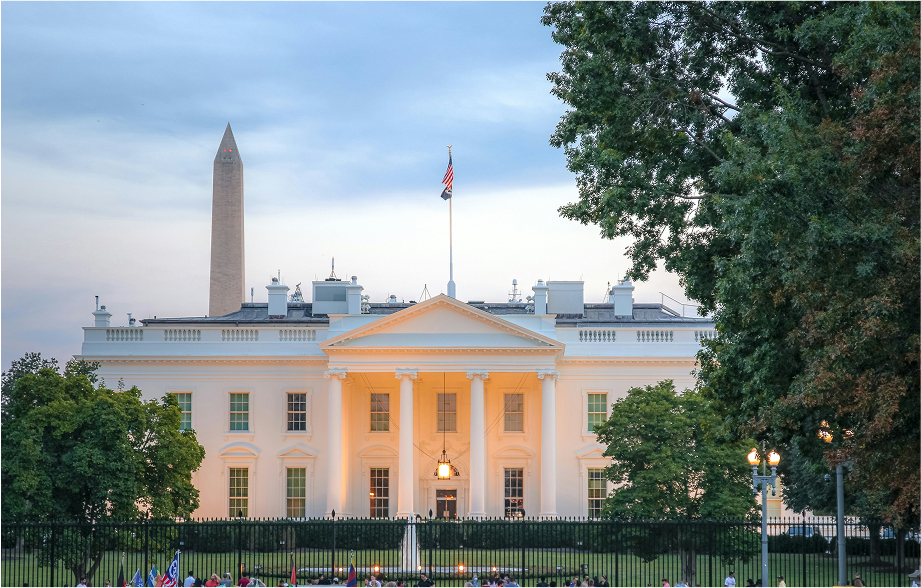
Twenty years ago, the CCP made biotechnology a strategic priority. The U.S. government’s approach has been piecemeal and uncoordinated, and we still lack the high-level departmental and agency leadership we need to execute a national biotechnology strategy. The United States must remedy this strategic weakness by adopting a more proactive posture.
1.1a Congress must establish a National Biotechnology Coordination Office (NBCO) within the Executive Office of the President with a director, appointed by the President, who would coordinate interagency actions on biotechnology competition and regulation.
Pillar 2: Mobilize the Private Sector to get U.S. Products to Scale

While China provides its leading companies with cheap capital through government subsidies and investments, America’s strong private markets remain our core advantage. We must leverage our capital markets to advance national biotechnology priorities. Complex regulations, underutilized capital, limited domestic scale-up capacity, and insufficient protections all prevent our biotechnology sector from reaching its full potential. By enabling our companies to compete on fair footing, the United States can build a resilient biotechnology ecosystem.
2.1a Congress must direct federal regulatory agencies to create simple pathways to market and exempt familiar products from unnecessary regulation.
2.2a Congress must establish and fund an Independence Investment Fund, led by a non-governmental manager, that would invest in technology startups that strengthen U.S. national and economic security.
2.3a Congress must authorize and fund the Department of Energy and the Department of Commerce to develop a network of manufacturing facilities across the country for precommercial bioindustrial product scale-up.
2.4a Congress must direct the Department of Homeland Security to ensure that biotechnology infrastructure and data are covered under “critical infrastructure.”
2.5a Congress must require public companies to disclose single points of supply chain vulnerability located in foreign countries of concern.
2.5b Congress must prohibit companies that work with U.S. national security agencies and the Department of Health and Human Services from using certain Chinese biotechnology suppliers that are deemed to pose a national security threat.
Pillar 3: Maximize the Benefits of Biotechnology for Defense

While biology represents a paradigm shift in warfare, the Department of Defense (DOD) is not deploying biotechnology-enabled capabilities, leaving our military vulnerable. We must develop these technologies in line with American values before the CCP advances them without ethical constraints.
3.1a Congress must direct the Department of Defense to consult with stakeholders to define principles for ethical use of biotechnology for the U.S. military.
3.2a Congress must direct the Department of Defense to work with private companies to build commercial facilities across the country to biomanufacture products that are critical for Department of Defense needs.
3.3a Congress must require outbound investment rules to ensure that U.S. capital does not support Chinese development of certain biotechnologies that could pose a national security risk.
Pillar 4: Out-Innovate our Strategic Competitors
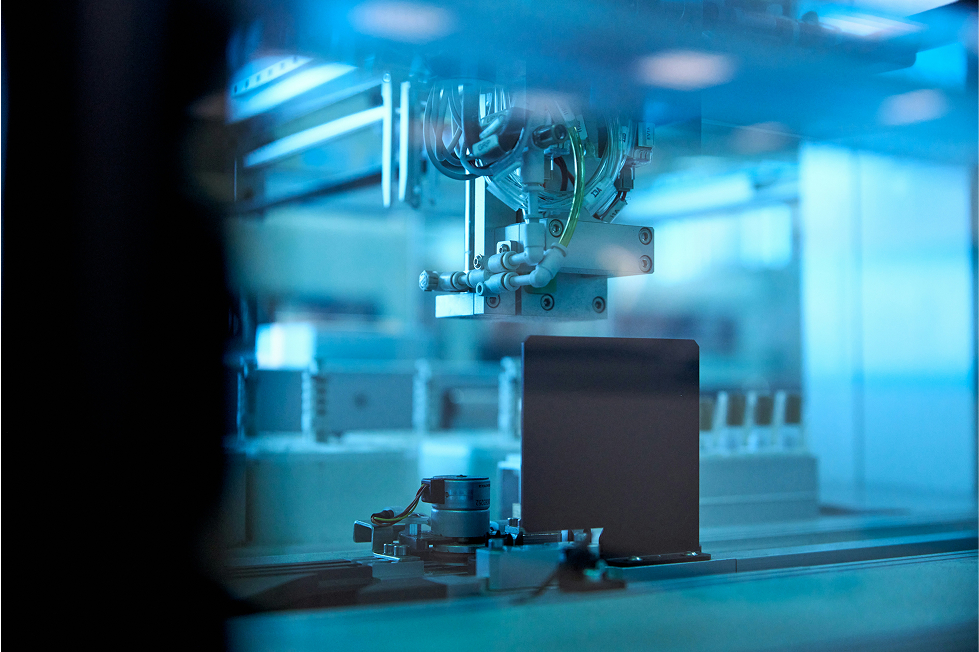
Harnessing our innovative strength will require prioritization. We must treat biological data as geopolitically important, as China already does. We must ensure that researchers have the tools they need to continue conducting the best research in the United States. And we must emphasize safety, security, and responsibility—so that the norms and standards of innovation align with American values and interests.
4.1a Congress must authorize the Department of Energy to create a Web of Biological Data (WOBD), a single point of entry for researchers to access high-quality data.
4.2a Congress must conduct oversight of existing policies, and add new ones where warranted, to ensure that China cannot obtain bulk and sensitive biological data from the United States.
4.3a Congress must establish Centers for Biotechnology within the existing National Laboratory network to support grand research challenges.
4.4a Congress must direct the executive branch to advance safe, secure, and responsible biotechnology research and innovation.
Pillar 5: Build the Biotechnology Workforce of the Future
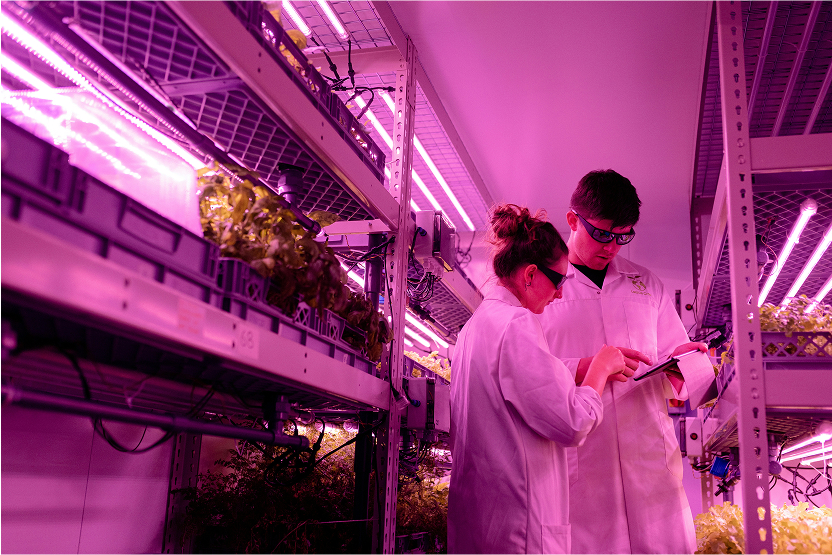
America’s greatest strength has always been its people, yet the United States currently lacks a bioliterate workforce. Federal departments and agencies must ensure that their employees are appropriately skilled and trained to advance and secure biotechnology. We must also strengthen our domestic biotechnology workforce and sustain the pipeline of talent, both at home and from abroad.
5.1a Congress must direct the Office of Personnel Management to provide workforce training in biotechnology across the interagency.
5.1b Congress must ensure that federal agencies have the necessary expertise across national security and emerging biotechnology issues.
5.2a Congress must maximize the impact of domestic biomanufacturing workforce training programs.
Pillar 6: Mobilize the Collective Strengths of our Allies and Partners

Our allies and partners are already looking to implement their own policies to promote and safeguard biotechnology. The United States should coordinate with likeminded countries on research, talent, and commercialization to harness the power of biotechnology to solve our shared problems.
6.1a Congress must include biotechnology in the scope of the Department of State’s International Technology Security and Innovation Fund to appropriately fund international biotechnology policy, research and development (R&D), and secure supply chains.
If the United States seizes this moment, the future of biotechnology has immense potential.
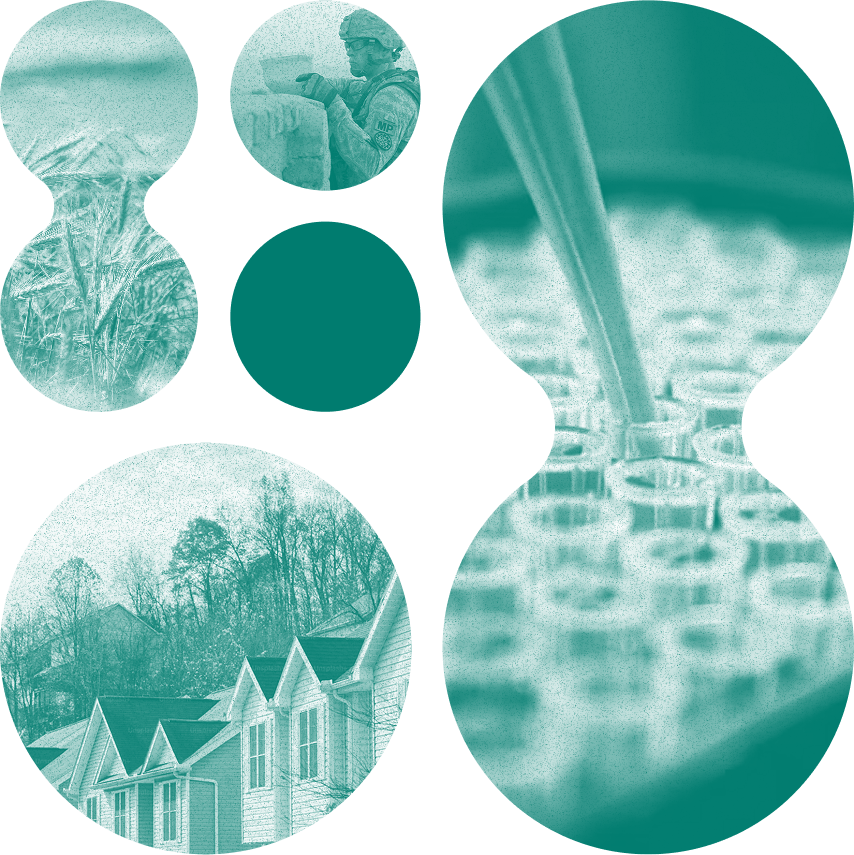
Defend
The United States military produces what it needs, when it needs it, where it is needed.
The U.S. defense industrial base is deteriorating, which leaves America and our allies vulnerable on the battlefield. Today, it takes more than a month to produce the same number of artillery shells that Ukraine uses in just three days. If war broke out with China, the U.S. military would run out of preferred munitions within days. Biotechnology gives us the tools to reshore the production of chemicals used in munitions, increasing the speed and efficiency with which we can resupply.
The same technology will be used in the future by forward operators. With biotechnology, platoons will be able to synthesize food, munitions, and therapeutics directly on the front lines using technologies that could fit in a backpack, instead of relying on materials produced thousands of miles away at home. Biotechnology will save lives on the battlefield and prevent the need for costly or dangerous refuel or resupply missions.

Build
American manufacturers power our economy with resources produced here at home.
The United States is dangerously reliant on other countries, including our adversaries, for our supply of the critical minerals used in essential consumer products, like laptops and cellphones, as well as defense and weapons systems. The United States and many of our partners do possess substantial quantities of rare earth metals—but in many cases, they are mixed with vast amounts of toxic waste and are therefore considered unusable.
Biotechnology will enable American miners and manufacturers to unlock these deposits. Using custom-designed proteins that act like microscopic robots, biotechnology allows us to separate high-purity rare earth elements and other critical minerals from toxic waste with unprecedented selectivity and cost-effectiveness. Biotechnology solutions like these will lower costs, increase domestic production of critical minerals, and reduce our dependence on countries like China.

Nourish
Farmers grow more food using less land, water, fertilizer, and pesticides.
Droughts, wildfires, floods, pests, and diseases cost farmers billions every year. Invasive pests alone cost the United States economy more than $1.2 trillion over the last 60 years.
Using biotechnology, farmers are already growing crops that require less water and are more resistant to pests. We are already well on our way to developing nitrogen-producing microbes that reduce or eliminate the need for expensive fertilizer. These adaptations are game-changers: U.S. farmers who invest in drought- and pest-resistant crops earn approximately three times more revenue compared to conventional crops.
Future biotechnologies will generate more revenue for American farmers, making our agriculture sector stronger and more sustainable, while increasing the supply of affordable and nutritious food for families across the country.

Heal
Doctors treat—and beat—disease.
In the case of too many diseases, we only know how to treat their symptoms, not the underlying issue. For example, the standard of care for patients with sickle cell anemia (SCA) is to receive regular blood transfusions to manage, but not eliminate, their disease. Sickle cell disease affects 100,000 Americans, causing life-threatening disabilities and early death.
Gene therapies for SCA can replace the diseased blood cells with healthy ones, providing a true cure. The first gene therapies for SCA were approved in 2023, and in the coming years, similar cures could be developed for a wide range of diseases such as muscular dystrophy, cystic fibrosis, diabetes, and cancer.

But if the United States fails to act, the future of biotechnology could be catastrophic.


Attack
Adversaries exploit human enhancements to outmaneuver and overwhelm the American warfighter.
Military forces are inherently limited by human capabilities in physicality, strategy, weaponry, and logistics. Biotechnology could erase these limitations.
Our adversaries could engineer “super soldiers” with genetically enhanced physical capabilities, such as greater intelligence and endurance and the ability to make decisions quicker and more accurately. Paired with new technologies like implanted brain-computer interfaces that tap directly into a soldier’s brain chemistry, these super soldiers could attack our military —before our leaders can even act.

Destroy
Enemies silently attack American infrastructure, disrupting transportation and trade.
It’s easy to imagine a future where our enemies stealthily deploy microbes engineered to degrade wood and concrete to weaken our roads, buildings, and bridges. Picture the Francis Scott Key Bridge collapse in Baltimore, which cost the economy an estimated $15 million each day it was closed and up to $4 billion in total losses—but carried out silently, so that our leaders cannot detect or prevent this catastrophe.
Converging technologies—biotechnology supercharged by AI, for example—could arm adversaries with the tools to create quiet and unstoppable chaos, making us fight an invisible enemy.

Starve
Grocery shelves are empty, families go hungry, and farmers suffer when adversaries attack our agriculture sector.
Livestock diseases cost farmers $358.4 billion each year globally in lost production, driving up food costs for Americans. Modify a plant pathogen so that it specifically targets crops grown in the United States, and those existing diseases will become superspreaders that decimate livestock, cripple farmers’ livelihoods, skyrocket costs at the grocery store, and make Americans go hungry.

Harm
Americans get sick and die because they don’t have access to the medicines they need.
The United States is overly and dangerously reliant on foreign sources for our medicines and therapeutics. We import up to 90% of our most commonly used medicine such as ibuprofen, hydrocortisone, and acetaminophen from China.
In a major global conflict, our adversaries could weaponize this dependence by cutting off our access to basic medicines or to life-saving therapeutics such as chemotherapies, either as retribution or as a preemptive move. The United States would face the impossible situation of defending our sovereignty and security, while trying to source treatments for millions of Americans.